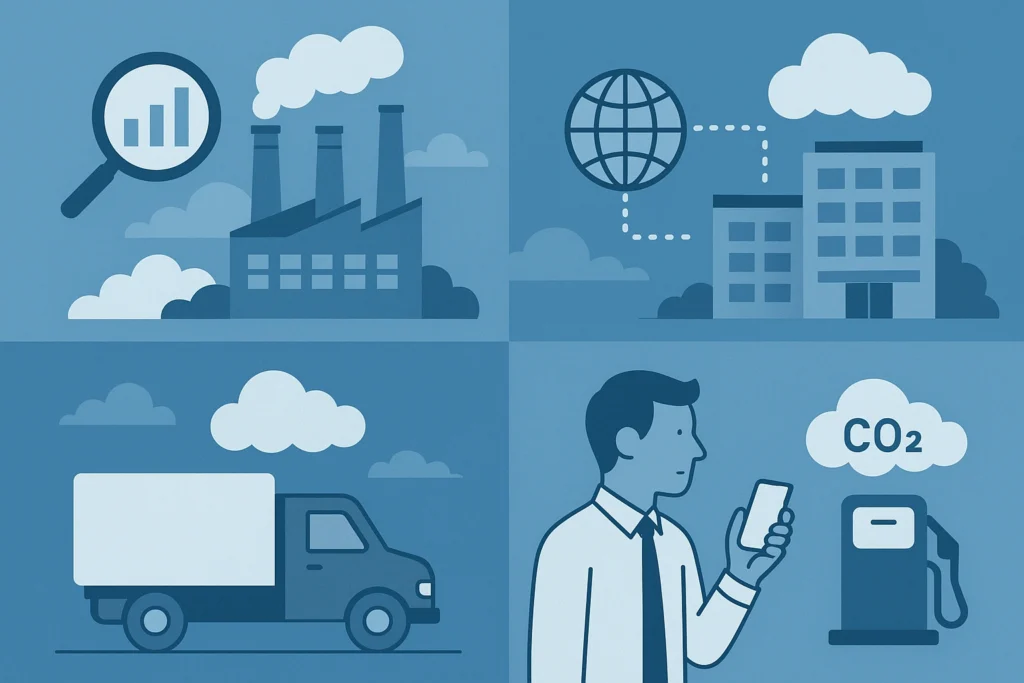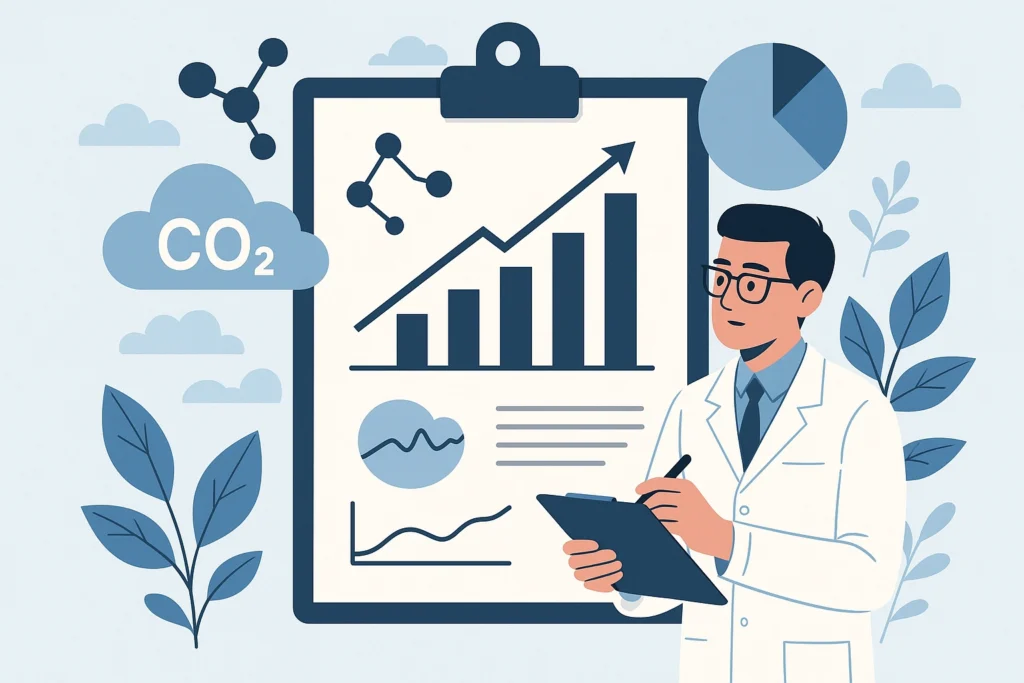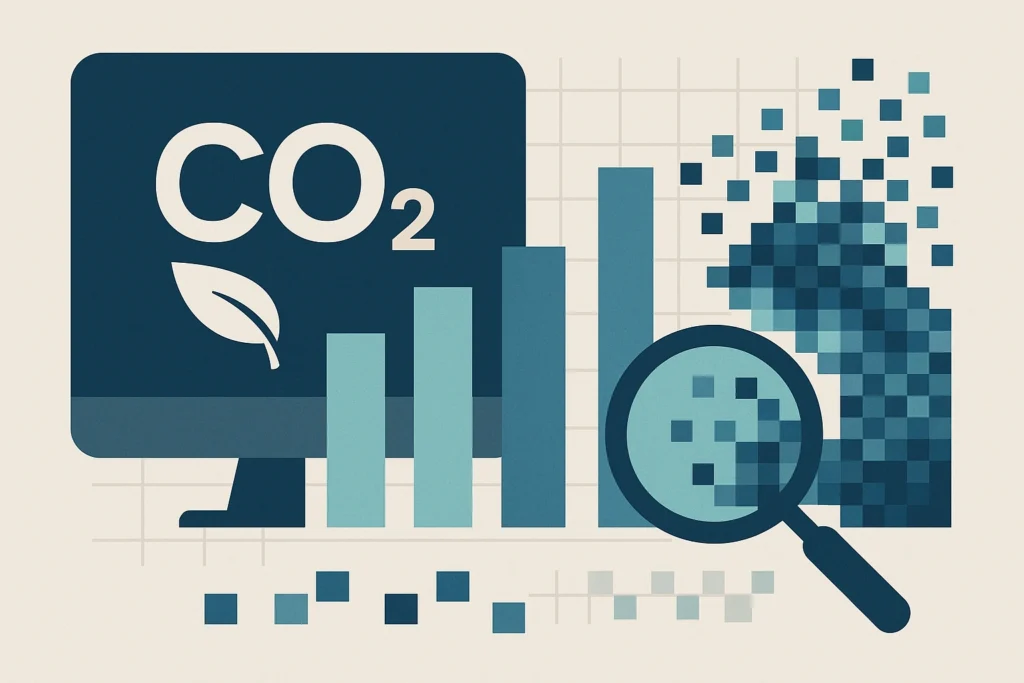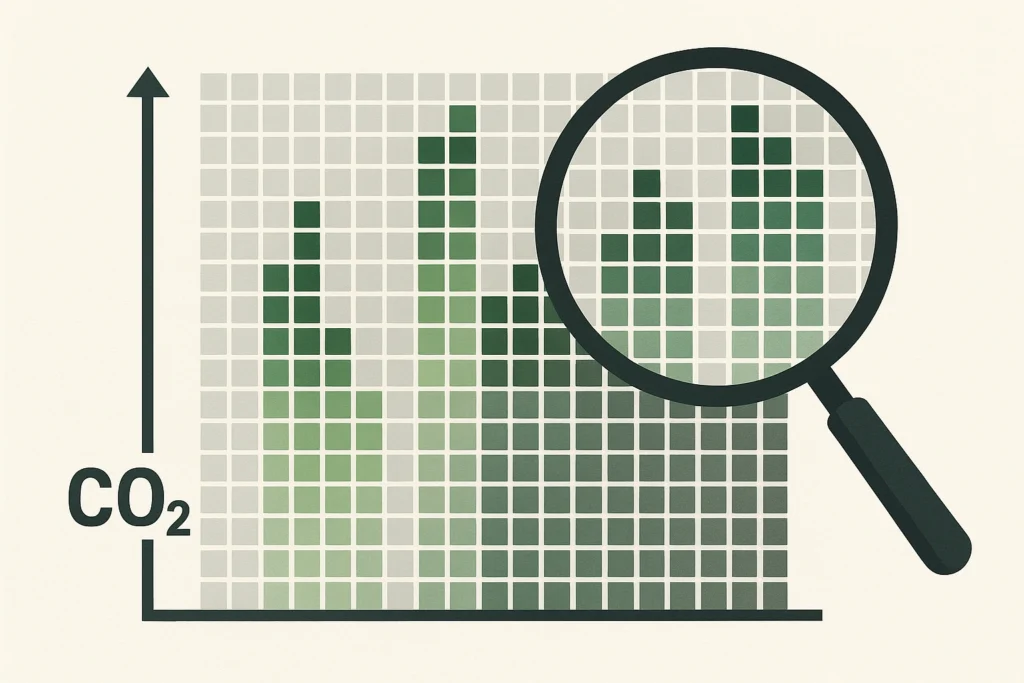How Science Improves Scope 1, 2, and 3 Emissions Tracking
The conversation around carbon emissions has fundamentally changed. It’s no longer just about protecting the planet; it’s about staying competitive. Today, regulators, investors, and customers expect total honesty when it comes to emissions reporting and scope emissions tracking.
But for organizations with big, complicated supply chains, nailing down an accurate count of Scope 1, 2, and 3 emissions is a massive hurdle. This is where the power of science and carbon reporting technology comes in. It includes advanced sensors and AI-driven analytics. These tools are letting businesses collect, measure, and analyze their carbon footprint with incredible precision. They give companies the leverage to move past simple compliance and actually start taking significant climate action.
Ready to learn more? We’re going to explore exactly how modern carbon accounting, Scope 1, 2, 3 software, and specialized ESG emissions tools are making emissions tracking more accurate than ever and why they’re now essential to any serious sustainability strategy.
What is Scope 1, 2, and 3 Emissions?
Before diving into the science, it’s essential to know more about the three categories of emissions defined by the Greenhouse Gas (GHG) Protocol:
Scope 1 Emissions
These are direct emissions from owned or controlled sources, such as fuel combustion in company vehicles or onsite boilers.
Scope 2 Emissions
Indirect emissions from purchased electricity, heating, or cooling consumed by the organization are known as scope 2 emissions.
Scope 3 Emissions
These are all other indirect emissions across the value chain, from supplier manufacturing to customer product use and disposal.
While Scopes 1 and 2 are relatively straightforward to measure, Scope 3 is far more complex, involving thousands of suppliers and lifecycle processes. That’s where emissions tracking science makes the difference.
Also See: Real-Time Carbon Data and it’s Science: Why It Matters
The Role of Science in Emissions Tracking
1. Scientific Carbon Accounting
Scientific carbon accounting is the application of physics, chemistry, and data modeling to measure greenhouse gas outputs. Instead of relying solely on averages or estimates, it integrates:
Direct measurement: Sensors and meters track emissions from combustion and production.
Emission factors: Verified databases quantify emissions linked to specific activities.
Lifecycle models: Simulations capture hidden emissions across value chains.
This scientific rigor ensures organizations move beyond rough estimates toward verifiable, audit-ready data.
2. Carbon Analytics Tools
Data alone isn’t enough. Companies need carbon analytics tools to interpret large volumes of emissions data. These tools use:
- Statistical analysis to identify anomalies and emission spikes.
- Comparative benchmarks to measure industry performance.
- Predictive modeling to forecast emissions under different operational scenarios.
By integrating emissions tracking science with carbon reporting technology, businesses gain both transparency and actionable insights.
3. Scope 1, 2, and 3 Software
Modern scope 1 2 3 software integrates data from across organizational units and supply chains. Features include:
Automated data collection: IoT devices feed real-time emissions data.
Supplier engagement platforms: Collecting scope 3 data analysis directly from vendors.
Scenario modeling: Simulating how operational changes reduce emissions.
Now, this approach transforms reporting into a dynamic ESG data management process rather than a static compliance exercise.
4. Climate Emissions Software for Real-Time Tracking
Legacy spreadsheets can’t keep pace with the speed of climate reporting. Climate emissions software uses cloud computing, APIs, and AI for:
- Continuous tracking of scope emissions data.
- Integration with energy bills, logistics platforms, and ERP systems.
- Visualization dashboards for executives and ESG managers.
By embedding science into carbon reporting technology, companies achieve both speed and accuracy in decision-making.
Why Scope 3 Needs Scientific Innovation Most

Scope 3 often accounts for over 70% of a company’s carbon footprint, yet it’s the hardest to measure. Challenges include:
Diverse data sources: Thousands of suppliers with inconsistent reporting.
Opaque value chains: Emissions embedded in raw materials, transportation, and product usage.
Data gaps: Limited access to upstream or downstream carbon information.
Science-driven scope 3 data analysis improves accuracy by:
- Using satellite imaging and remote sensing to track land-use emissions.
- Applying machine learning models to estimate supplier footprints where data is missing.
- Leveraging blockchain-based ledgers for verified supply chain emissions reporting.
This scientific precision ensures companies address the biggest contributor to climate risk with greater accountability.
Benefits of Scientific Scope Emissions Tracking
Tracking carbon emissions is not just about filling in a compliance report. The way organizations measure their Scope 1, 2, and 3 emissions directly impacts credibility, efficiency, and long-term climate action. By applying scientific methods and precision tools, businesses unlock benefits that go far beyond checking regulatory boxes.
Here’s how a science-driven approach transforms emissions management:
Improved Accuracy
Traditional reporting often relies on industry averages or estimates. That might be enough for a rough picture, but it leaves too much room for error. Scientific tracking uses sensors, verified emission factors, and advanced modeling to capture the real data.
As a result, numbers will reflect actual performance, not just assumptions. With improved accuracy, companies can pinpoint exactly where emissions come from and act on reliable information.
Regulatory Compliance
Climate regulations are getting stricter across regions. Guesswork won’t stand up to an audit. Scientific carbon accounting provides transparent, verifiable data that aligns with ESG frameworks. As a result, this minimizes compliance risks and protects companies from potential fines, penalties, or reputational damage.
Investor Confidence
Investors are increasingly looking at ESG performance before allocating capital. But they’re not just scanning headlines; they want data they can trust. Science-based tracking reassures investors that emission numbers are accurate, consistent, and backed by verifiable methods.
Operational Efficiency
Scientific tracking reveals hidden inefficiencies: a poorly maintained boiler consuming excess fuel, a delivery route creating unnecessary emissions, or a supplier with high carbon intensity. By identifying these hotspots, companies can reduce emissions and cut costs at the same time. Accurate data guides smarter investments in technology and operations.
Climate Impact
The ultimate goal of tracking emissions is to reduce them. When organizations rely on estimates, reductions may exist only on paper. With science-driven accuracy, every reduction reflects a real change in operations, supply chains, or energy use.
ESG Emissions Software: A New Era of Accountability

Modern ESG emissions software empowers strategy. By integrating scientific carbon accounting with ESG data management, businesses can:
- Map their full carbon lifecycle.
- Set data-backed reduction targets.
- Align with international standards like GRI, SASB, and ISSB.
- Enable transparent disclosures for investors and regulators.
In this way, emissions tracking evolves from a compliance burden into a climate-positive strategy.
Future of Emissions Tracking: Science + AI
Looking forward, the integration of AI with emissions tracking science will transform ESG data management. Future trends include:
- AI-driven anomaly detection: Identifying irregular emission sources instantly.
- Predictive carbon modeling: Simulating how policy, technology, and behavior changes affect footprints.
- Digital twins for carbon: Virtual models of facilities for real-time emissions testing.
- Automated audits: Blockchain-secured records enabling near-instant compliance reviews.
With science at the core, emissions tracking will evolve from static reporting into dynamic carbon management.
FAQ: Scope Emissions Tracking
Why is science important in scope emissions tracking?
Because it brings precision, verification, and credibility to carbon accounting ensuring companies don’t rely on guesswork.
What is the difference between Scope 1, 2, and 3?
Scope 1 covers direct emissions, Scope 2 covers purchased energy, and Scope 3 covers all other value-chain emissions.
Can software alone ensure accurate carbon reporting?
No. Effective reporting requires both carbon reporting technology and scientific measurement methods.
Why is Scope 3 the hardest to track?
Because it involves third-party suppliers, product use, and end-of-life disposal, which are harder to monitor directly.
How does AI improve emissions tracking?
AI enables predictive analytics, anomaly detection, and better integration of fragmented data sources.
Conclusion
It’s clear that climate accountability is rapidly increasing, meaning organizations can no longer afford to use ballpark figures for their environmental impact. The shift must be toward science-backed emissions tracking.
We can achieve this by implementing scientific carbon accounting methods, supported by modern carbon analytics tools and specialized ESG software. This combination allows businesses to accurately capture and manage their Scope 1, 2, and, crucially, Scope 3 emissions.
Beyond meeting regulatory requirements, this disciplined, scientific approach is key to earning investor trust, hedging against future risks, and making a genuine contribution to global climate goals. Ultimately, pairing science with technology is what will turn sustainability into a measurable, data-driven practice.












